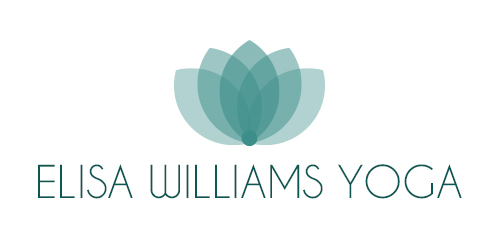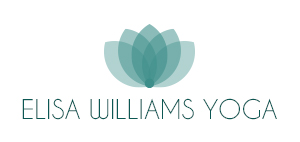Despite its status as a “resting pose,” Child’s Pose can be the Marmite of yoga asana for many people. You either love it or you hate it.
When I started practicing yoga as a mother – eventually of five, finding the time to go to a yoga class was a major effort of planning and delegating. Once I had made it on to my mat I wanted to really go for it. The last thing I wanted during my precious moments of me time was to curl up like a little mouse and be still. I could feel myself almost drumming my fingers with impatience and agitation with my desire to move on to something more challenging.
However when I came to do my yoga teachers training and yoga began to take on an increasingly significant role in my life and not just an escape from child rearing, I noticed a shift in my relationship with Child’s Pose too. I no longer felt frustrated by what I perceived as wasted time sitting back on my heels. In fact, I actually began to look forward to it.
When I started practicing yoga as a mother – eventually of five, finding the time to go to a yoga class was a major effort of planning and delegating. Once I had made it on to my mat I wanted to really go for it. The last thing I wanted during my precious moments of me time was to curl up like a little mouse and be still. I could feel myself almost drumming my fingers with impatience and agitation with my desire to move on to something more challenging.
However when I came to do my yoga teachers training and yoga began to take on an increasingly significant role in my life and not just an escape from child rearing, I noticed a shift in my relationship with Child’s Pose too. I no longer felt frustrated by what I perceived as wasted time sitting back on my heels. In fact, I actually began to look forward to it.
When I heard the word, “Balasana,” any previous frustration melted away and was replaced by respect and a quiet curiosity. With a new found ‘teachers mind’ I began to explore subtle variations of the pose with my arms, legs and breath. Throughout my many months of teachers training whilst I enjoyed all the challenging stuff, the wisdom, the philosophy and anatomy I started actually choosing Child’s Pose whenever it was presented as an option.
In my home practice I found myself in Child’s Pose more often based on learning to actually listen to the call of my body, mind, or spirit. Slowly, little by little, practice by practice I had grown to love my nemesis pose.
Looking back, it’s not so difficult to understand why this gentle, humble asana eventually seduced me into its care.
1. Child’s Pose provides respite between effort
Maybe it is an age thing, my urban life of physical work and the demands of a large family but I now really love the moments of rest granted by Child’s Pose.
Child’s Pose provides respite time between my efforts: a moment when I can breathe, recharge and revitalise before asking my body to work again. It encourages me to be grateful for the strength, flexibility, and stamina that allow me to move and experience a full and active life.
Child’s Pose invites me to reflect on the positive changes that come from my yoga practice.
It appreciates the time and effort I put in when working through challenges. No matter what the outcome.
Child’s Pose inspires me to appreciate my body and its incredible abilities, no matter what my level of practice.
2. Child’s Pose gives me time to take stock
Sometimes, despite my good intentions, I am on my mat, but my mind is miles away.
Child’s Pose gives me time to take stock, to check in and think about why I may be
distracted or discouraged or apathetic. It offers me a second chance to return my practice in
a better way, with more intention and focus.
distracted or discouraged or apathetic. It offers me a second chance to return my practice in
a better way, with more intention and focus.
Child’s Pose allows me check in with my body as well as my mind. To scan my body for
stiffness, tightness, disquiet, fatigue. It encourages me to ask if I should dig deeper. If I
should be more gentle or I need to take some healing breaths. Or perhaps I simply need to rest.
stiffness, tightness, disquiet, fatigue. It encourages me to ask if I should dig deeper. If I
should be more gentle or I need to take some healing breaths. Or perhaps I simply need to rest.
No matter what I am feeling mentally or physically, Child’s Pose encourages me to explore
3. Child’s Pose is always there
Child’s Pose is always there for me. No matter where I am in my practice, no matter what pose or sequence, the door to Child’s Pose is always there with a welcome sign on it.
When I realise my muscles aren’t trembling with joy, Childs Pose calls me from the corner
enouraging me with the assurance that it’s there for me should I need it.. Child’s Pose gives me permission to try, fail, rest, and try again.
Child’s Pose accepts me unconditionally. It knows that on some days I want to explore and others I want to take refuge. That two contradictory thoughts can be part of the same journey. It doesn’t need to know whether I am on the path or off it rather, it asks me how I want to travel. It reminds me that I don’t always have to push and struggle, that can pause and rest along the way.
I can celebrate my successes. I can explore obstacles and reflect on challenges. I can take time to heal, center myself, and redirect my focus. I can set a new intention at any time. And thanks to what I’ve learned from my beloved Child’s Pose, I can do this off the mat as well as on it.
FOR INFORMATION ABOUT ELISA’S LONDON YOGA CLASSES & OVERSEAS YOGA HOLIDAYS VISIT Elisa Williams Yoga




